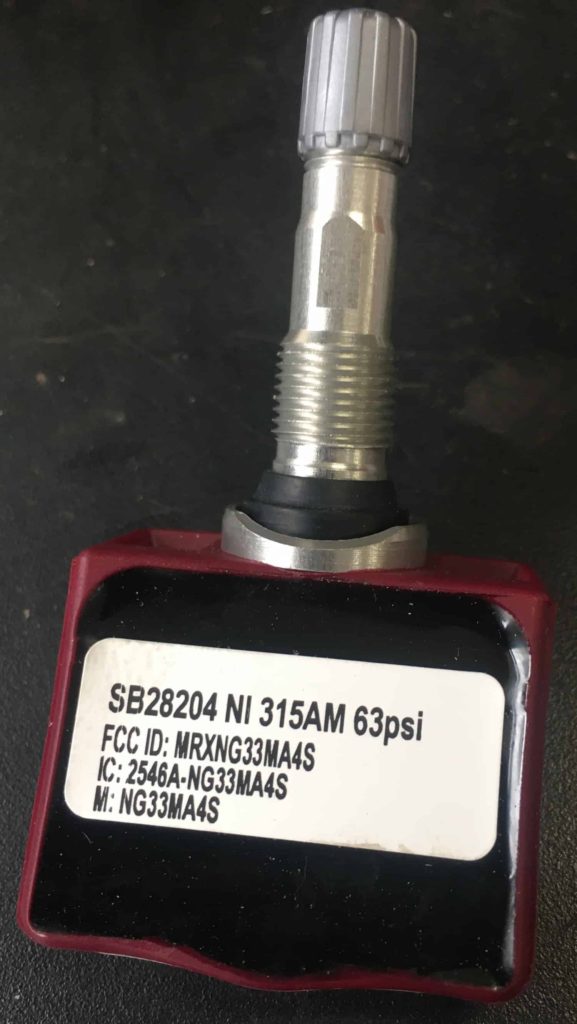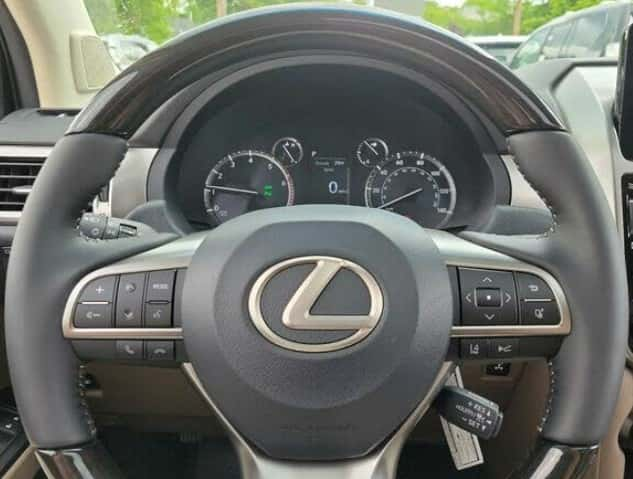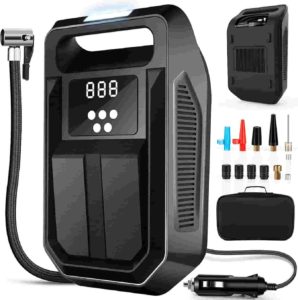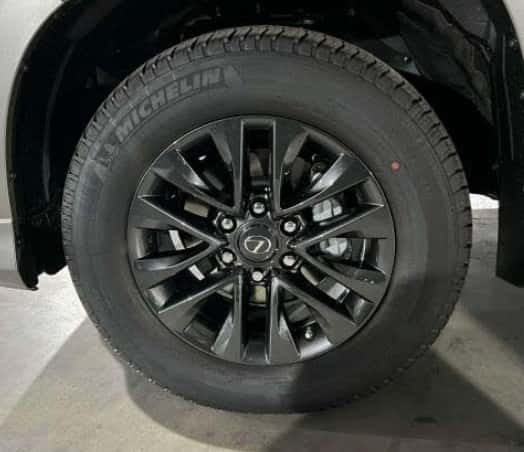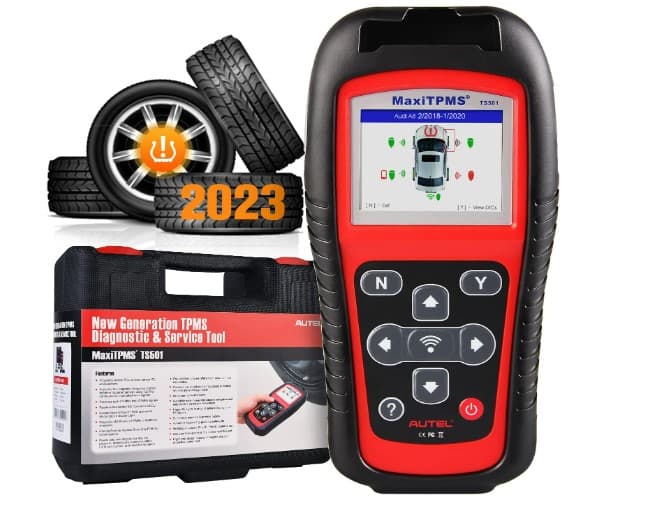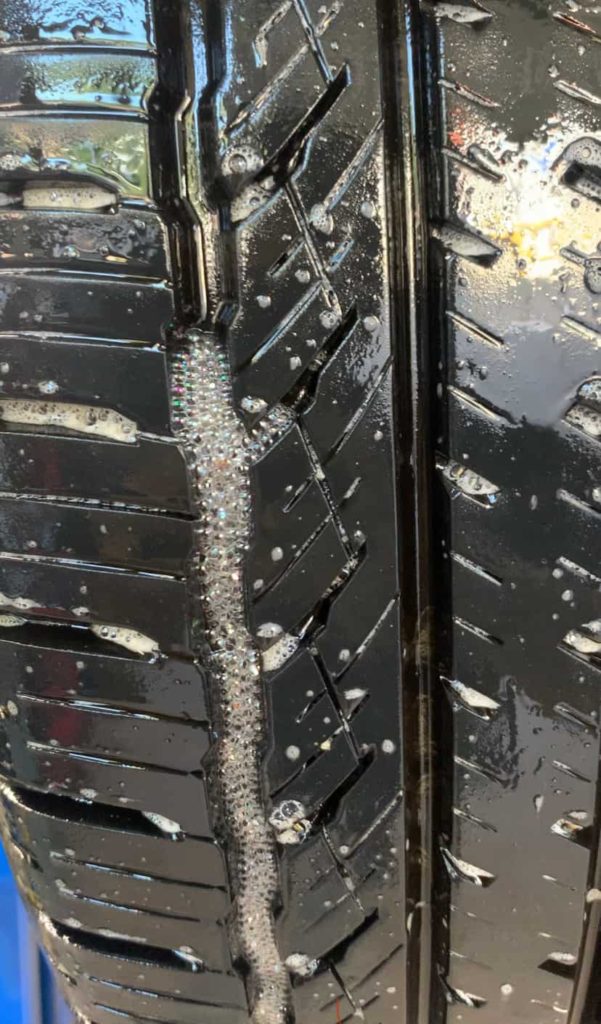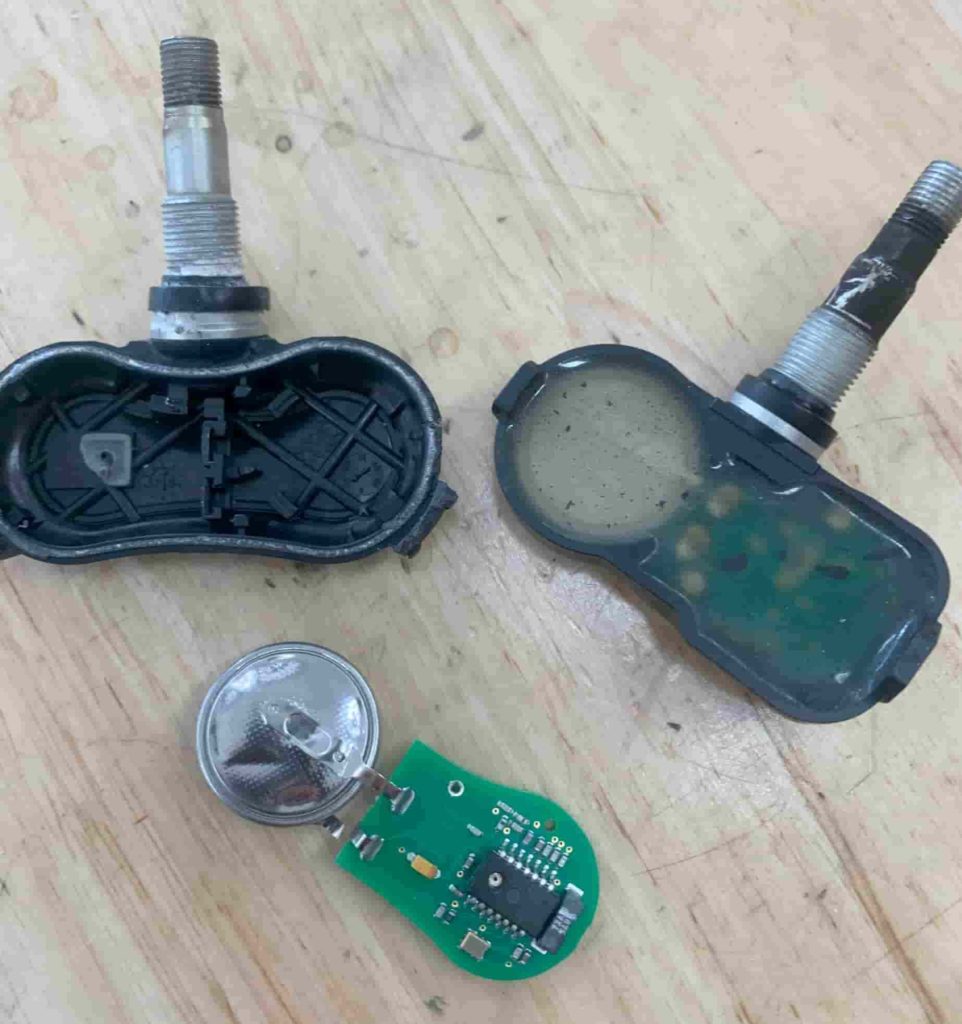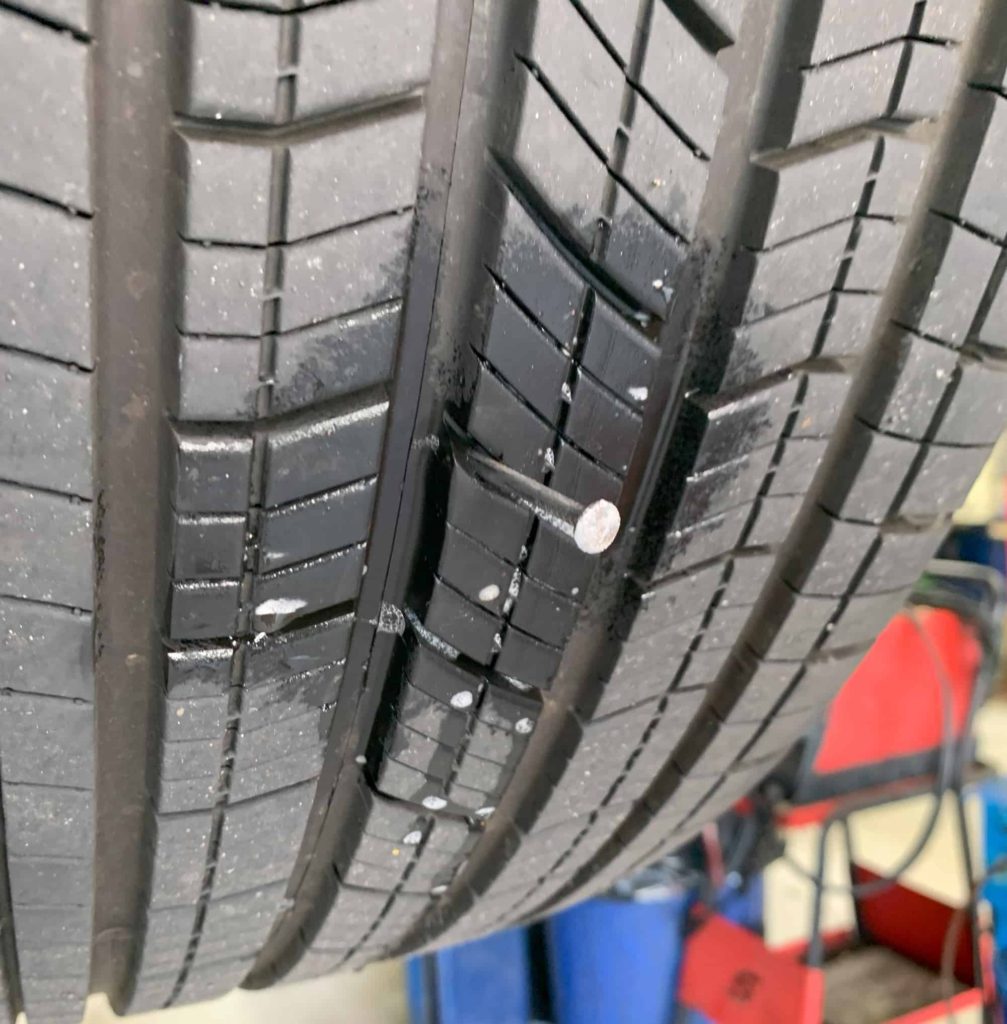How Does the Lexus GX Tire Pressure Monitoring System Work
The Lexus GX Tire Pressure Monitoring System (TPMS) is a sophisticated vehicle safety mechanism designed to alert the driver when one or more of the tires is significantly under-inflated. Here’s an explanation of how the Lexus GX TPMS works.
1. Sensors and Transmitters
Each wheel and tire has its own tire pressure sensor attached to the end of the valve stem inside the wheel. These battery-powered sensors measure the air pressure and temperature inside each tire and send this data to the TPMS control unit via radio frequency signals (either 315 Mhz or 433 Mhz).
2. TPMS Receiver Module
The central hub for the system is the TPMS control unit also known as the TPMS receiver module that communicates with the Lexus GX’s main Electronic Control Unit (ECU). It collects data from all the sensors, analyzes the information and determines whether the pressure in any of the tires is outside the manufacturer’s recommended range.
3. Alerts and Indicators
If the TPMS control unit detects a tire pressure that’s 20% – 25% or more below the recommended level, it will trigger a warning light on the car’s dashboard. This is represented by a yellow exclamation mark inside a tire cross-section. The Lexus GX also displays the exact tire that’s affected and its current pressure level on the information screen.
Lexus GX Tire Pressure Light Reset Procedure
Adjust the tire pressure to the recommended pressures.
Park the vehicle and switch the ignition to the ON Position.
Using the arrow buttons on the right side of the steering wheel, scroll over and select the gear icon. (Vehicle Settings)
Scroll down using the down arrows on the steering wheel and select TPMS or TPWS.
Hold down the OK button on “Set Pressure” until the tire pressure light blinks 3 times.
Release the button after the tire light has finished blinking.
Drive the Lexus for 15 minutes or more at 25 mph or more or until the PSI of each tire is displayed on the information display.
What Causes the Lexus GX Low Tire Pressure Warning Light to Turn On?
Ambient Temperature Fluctuations: Seasonal changes especially a decrease in temperature can lower tire pressure, thus activating the warning light.
Punctures and Leaks: Objects like nails or screws on the road can puncture a tire and cause air loss.
Valve Stem Complications: Damage or leaks in the valve stem, possibly requiring a gasket replacement, can cause gradual pressure loss.
Tire Damage from Impact: Structural impairments like tire bubbles from hitting potholes or curbs may lead to pressure loss.
Wheel-Related Problems: Low profile tires are prone to pressure loss due to damaged, corroded, or cracked wheels.
TPMS Sensor Malfunctions: A damaged or faulty sensor or driving with the spare tire on will cause the tire pressure system to malfunction.
Sensor Battery Depletion: Batteries in TPMS sensors typically last 5-10 years.
Post Tire Rotation or Replacement Issues: After a tire rotation or replacement, TPMS recalibration is needed, or the warning light could turn on due to the system confusing the front and rear tire positions.
Altitude Variations: Changes in elevation can affect tire pressure. For every 1.5 Km change in altitude, tire pressure will change by 1 Psi.
Natural Pressure Reduction: Gradual pressure loss due to permeation, temperature fluctuations, or dry-rot from sitting can activate the warning light.
Electrical and Software Challenges: Problems within the car’s TPMS system or necessary software updates from Lexus.
Snow Tire Considerations: Having a separate set of wheels for snow tires may necessitate transferring or acquiring additional sensors. If using the same wheels, this won’t be an issue.
Improper Tire Installation: If a tire is not mounted on the wheel properly, tire pressure sensors can be broken.
Incorrect Tire Pressure Adjustment: Tires might be inflated to the incorrect pressure, either over or under the recommended Psi.
Use of Spare Tire: If a spare tire is used that doesn’t have a TPMS sensor or has different pressure requirements, it might cause the warning light to activate. The 2022 Lexus GX spare tire requires 32 Psi and if it has a metal valve stem it has a tire pressure sensor.
Environmental Factors: Exposure to extreme environmental conditions such as harsh chemicals, salt, or excessive moisture can affect the sensors.
Radio Frequency Interference: Though rare, other devices emitting radio frequencies within the same range as the TPMS sensors might cause interference, leading to inaccurate readings. (Any electronic devices using either 315 Mhz or 433 Mhz within a certain range can potentially interfere with the TPMS.)
Physical Damage to TPMS Receiver Module: Damage or faulty wires or plugs connecting to the TPMS receiver module can potentially cause false tire pressure readings.
When Should You Reset the Lexus GX Tire Pressure System?
When you change the tire inflation pressure.
Anytime a wheel or tire is replaced, removed, or serviced in any way.
After a tire pressure sensor or valve stem is replaced or repaired.
Understanding Tire Pressure
How Does the Weather Affect the Tire Pressure?
Weather plays a significant role in the tire pressure of a Lexus GX, as it does with any vehicle. As a rule of thumb, for every 10 degrees Fahrenheit change in temperature, tire pressure changes about 1 PSI (Pound per Square Inch). In colder weather the air inside the tires contracts, leading to a decrease in tire pressure. This is why you may notice the tire pressure light come on in the colder seasons. In warmer weather the air expands, causing an increase in tire pressure. It’s important for Lexus GX owners to regularly check their tire pressure especially during seasonal changes.
What is "COLD" Tire Pressure?
“Cold” tire pressure refers to the air pressure in your Lexus GX’s tires when they have not been driven on for at least three hours and are at ambient air temperature. This is the optimal time to measure and adjust tire pressure as the tires are in a relaxed state, unaffected by the heat generated from driving. If you adjust your tire pressures based on non-cold readings, you’ll likely end up overfilling your tires.
How To Check Tire Pressure
Make sure the tires are cold.
Remove the valve cap from the tire.
Press the tip of the tire pressure gauge onto the valve stem core and read the pressure.
If the tire pressure is below the recommended level, fill the tire with air until the recommended Psi is reached. If the tire pressure is above the recommended pressure, gently push the valve stem core in to release air until it’s correct.
After adjusting the tire pressure, don’t forget to put the valve caps back on to prevent leaks and keep dirt and moisture out.
Repeat this process for each tire, including the spare if applicable.
2022 Lexus GX Wheel Size & Tire Pressure
TIRE SIZE | FRONT PSI | REAR PSI |
265/55R19 | 32 | 32 |
265/60R18 | 32 | 32 |
SPARE | 32 | 32 |
What are the Impacts of Driving with Underinflated Tires?
Driving a Lexus GX with low tire pressure can have several immediate and long-term impacts that affect not only the vehicle’s performance but also its safety and efficiency.
Reduced Fuel Efficiency: Low tire pressure increases the SUV’s rolling resistance, meaning the engine has to work harder to move the vehicle. This leads to increased fuel consumption, making the vehicle less economical to drive.
Compromised Handling: Under-inflated tires can reduce the SUV’s steering responsiveness and feel for the road. This can make it more difficult and less comfortable to drive the Lexus GX.
Increased Tread Wear and Tear: Tires with low pressure wear out more quickly particularly on the tread edges, leading to a shorter overall lifespan.
Adverse Effect on Comfort: The ride quality will become harsher with low tire pressure, causing discomfort to the driver and passengers. The tires might also produce more road noise.
Potential Damage to Vehicle Components: Consistently driving with low pressure can cause undue stress on other parts of the SUV such as the suspension and braking systems.
Environmental Impact: The decrease in fuel efficiency associated with low tire pressure translates into higher emissions, contributing to environmental pollution. Also, wearing out tires faster than they would with correct tire pressure also leads to more tire waste.
In essence, driving a Lexus GX with low tire pressure not only diminishes the driving experience but also poses significant risks to the vehicle and the environment.
Troubleshooting & Diagnosing TPMS Issues
If your having issues with your Lexus GX low tire pressure warning light, here are four potential solutions to try:
Solution 1: Is The Tire Losing Air?
The tire light commonly turns on due to a loss of air pressure from a leak. If you inflate the low-pressure tire and the light turns off or resets, only to come back on within minutes, hours, or days, it’s a clear indication that there’s a leak in the tire or wheel.
Solution 2: Manually Erase the Tire Pressure DTC Code
If the tire warning light stays on and other fixes don’t work, you may need to reset the Lexus GX’s computer by disconnecting the battery. Start by disconnecting the negative terminal from the 12 Volt battery. This cuts off power to the Engine Control Unit (ECU), clearing all error codes including the tire pressure light DTC. After reconnecting the battery, your Lexus GX will enter a “relearning” phase where it recalibrates all its sensors. To finalize this relearn phase, drive at a speed of 50 Mph for a duration of 30 minutes or more. If the tire light turns off after completing this process and then comes back on after driving, you likely have an issue with an individual pressure sensor.
Solution 3: Determine Which Tire Sensor is Low on Battery Power
If the tire pressure light is on due to a suspected low battery in one of the tire pressure sensors (TPMS malfunction), you can check the sensors using a TPMS diagnostic tool. The process is usually the same for different brands and models. Place the TPMS tool near the valve stem and select the “test” function. After testing all four sensors the tool will provide a report on the battery status of each sensor. If any sensor shows a “low” status or doesn’t provide a report, it needs to be replaced.
Solution 4: Why Does the Tire Light Turn On and Then Off On its Own?
If the tire pressure light in your Lexus GX turns on at startup but goes off as you drive, it likely means the tire pressure is just below the required level. This can occur when the tires are cold (for example a cold pressure of 27 Psi) and then warm up during driving causing the pressure to increase (possibly to 31 Psi) and the warning light to turn off. To fix this, ensure that each tire is inflated to the exact proper pressure level of 32 Psi.
How to Find a Tire Leak
Start by assessing the air pressure in each tire to identify the one that is underinflated. Proceed to inflate the tire since the following steps won’t work if the tire is completely empty of air. Next, use a spray bottle containing a mixture of water and soap (or Windex) to liberally coat the entire tire. Soak it! Focus on the bead area and the valve stem and ensure that the entire tire’s surface is wet. After allowing it to sit for a short time, closely inspect the tire for the appearance of small bubbles on the tire. Should there be an air leak and the tire has been coated with the soapy mixture, the air escaping from the puncture will create tiny bubbles at the source of the leak. Find the bubbles and you’ve found the leak!
Tire Pressure Sensor Batteries
Each wheel of the Lexus GX is equipped with its own tire pressure sensor. Each sensor is powered by a built-in battery similar to those found in key fobs or wristwatches. Encased in plastic and directly connected to the sensor’s circuit board, these batteries are not individually replaceable. If a battery dies or is low on power, a full sensor replacement is required. Factors such as driving conditions, weather changes, and the frequency and length of your trips can influence the battery’s lifespan.
Common Tire Pressure Sensor Questions
Is It Safe to Drive With the Tire Light On?
We emphatically advise against driving if the tire pressure warning light is on, as it could potentially jeopardize your safety. If you really want to know if it’s safe to drive with the tire light on, you need to determine WHY the tire light is on! Is there a nail or screw stuck in the tread? Is the bead seal leaking? Is the tire losing air quickly or slowly? Figuring out exactly what the issue is is the only way to determine if it’s actually safe to drive with the tire light on and for how long.
Why is My Tire Light Flashing?
If your Lexus GX tire pressure light is flashing, your TPMS is malfunctioning. A TPMS malfunction means that your Lexus GX TPMS receiver module cannot communicate with the tire pressure sensors. This either means a wheel is missing a tire pressure sensor or one of the tire pressure sensors is low or dead on battery power and cannot communicate with the receiver module.
Will My Lexus GX Pass State Inspection With the Tire Light On?
I am personally a licensed New Jersey state inspector and in New Jersey, having a functional TPMS in a passenger vehicle is not a requirement. If the tire pressure light is on, the vehicle will still pass inspection. Specific state requirements vary so contact your local state inspector and ask.
Are Tire Plugs Safe?
Certainly! I’ve used tire plugs to fix hundreds of tires and highly recommend them. I’ve used them on my own vehicles as well as family members’ vehicles. Tire plugs are made from tough, rubber-like materials so they can withstand extreme pressure and temperature changes inside the tire. If installed correctly, a tire plug can last as long as the tire itself. Just remember, they shouldn’t be used on the tire’s sidewall.
Are Tire Sealants Safe to Use With TPMS Sensors?
Tire sealants are a temporary fix for flat tires on your Lexus GX and should be used only in emergencies. They can damage tire pressure sensors and the tire itself if the sealant liquid is not removed from the tire after using. Sealants may also unbalance the tire, causing vibrations when driving. Tpmsreset recommendation: Avoid using tire sealants unless absolutely necessary, and seek professional tire repair as soon as possible if you do use them.
Everything in this article is applicable to all Lexus GX trims and models including the Lexus GX 460, GX 460 Premium and GX 460 Luxury.
Please note that this blog post contains Amazon affiliate links. This means that if you make a purchase through one of these links, we at TPMSRESET.COM may earn a small commission at no extra cost to you. We only recommend products that we personally use and believe in. Thank you for supporting us.

